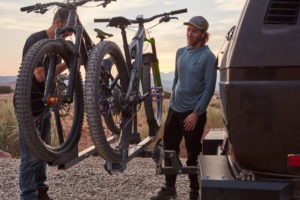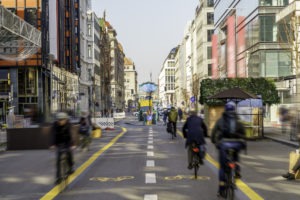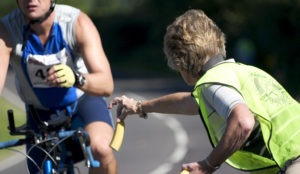If you’re anything like me, the familiar is your go-to. Your favorite burger joint is always better than the one down the road—great atmosphere, delicious food, and it’s right next to your house. Why would you ever walk an extra block for something obviously inferior? This is a perfectly normal mindset, until you find yourself eating the same burger with the same drink in the same corner table for the 3rd month in a row with the same amateur golf tournaments on TV all day. Suddenly, you remember that other joint down the road.
The same can be said for cycling. I have biked the Gateway trail in the northeast Twin Cities metro more times than I can count, and I absolutely love it. Still, the urge to try something new is ever-present, gnawing at the cords of your will until they snap and you switch things up. For me, it was getting off the paved comforts of the Gateway, and pedaling out into the unknown wild of Minnesota.
Planning a new route can be a challenge, especially if you’re unfamiliar with the area you plan on biking. Below are some ways to help you find the perfect route.
Paper Maps
One of the simplest ways to find a new route is to dust off those paper maps you’ve got piling up in your glove box. Paper maps are awesome because they give you an aggregate view of your state or city, which can give you ideas you might not otherwise have thought of. While pouring over your map, you may see a certain landmark or trail that you forgot you wanted to explore. Plan accordingly!
The best way I have found to plan with a paper map is to pick a point A and B. Mark them on your map, then trace a route along roads and trails with a pencil until they connect. Write down the turns as they come, left at Moo-Moo Ave., right at Donkey Rd., and keep it with you so you know exactly where you’re going. Be sure to take the map with you as well. Sometimes weather conditions or the season prevents you from taking your planned route. When the map is on hand, you can easily adjust course and find a new path.
That being said, paper maps only tell you so much. After all, the map is not the territory. You may be expecting a gentle cruise on a country road, only to find yourself racing wildly down a rocky slope. If you’re not old-school like me, you may want to employ better technology.
Course Planning Apps
There is a wide variety of course planning apps you can use to find the perfect route. For a digitized version of the paper map method described above, check out bikemap. Just enter the points you want to bike to and bikemap will find the quickest route. This is also a great choice for commuters.
Another good option is Strava. Strava is like bikemap, but provides a series of map options that help give you a better sense of what to expect on the course. Satellite views, terrain, heatmap and distance markers all help you get a great sense of how the course rides. You can also export the information to a GPS device for on-the-go directions. These routes are submitted by the folks who ride them, so you can count on them being reliable and fun.
At the upper end of the technological spectrum is MapMyRide. MapMyRide is an app developed by Under Armour that lets you easily plan your next route, record it and share it with others on a huge database. You can find routes from other cyclists all over the world, so if you’re planning a trip out of state or country and are unfamiliar with the area, you can find a good course in just a few minutes. You can find terrain information including elevation at any point on the course so you know what to expect. When you set out, it will actively guide you along the way while collecting data on your performance. This makes it an excellent tool for workouts and training. If you’re a competitive type, you can compare your time to others and race for the fastest time.
If you’re planning a much longer cross-country trip, you may want to check out some resources from the American Cycling Association. In particular, look into the Adventure Cycling Route Network. The ACA has mapped over 47,000 miles of cycling routes throughout North America over cross-country, loop, coastal and inland terrain with detailed navigational instructions along the way.
However you decide to plan, the important thing is that you’re going out and trying something new. Cruising along an unknown trail, path or road can be exhilarating. Seeing things for the first time will certainly your sense of adventure.








